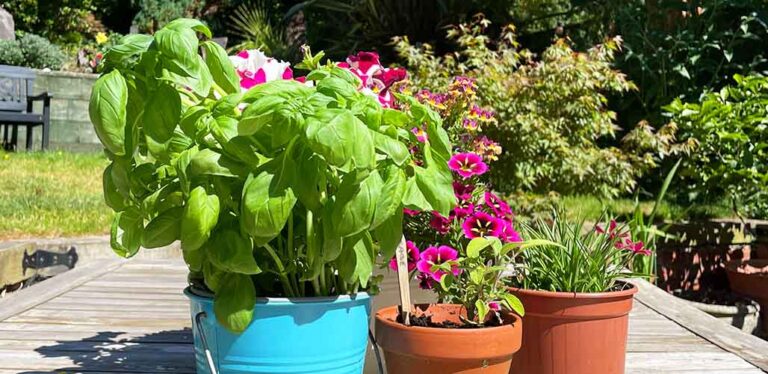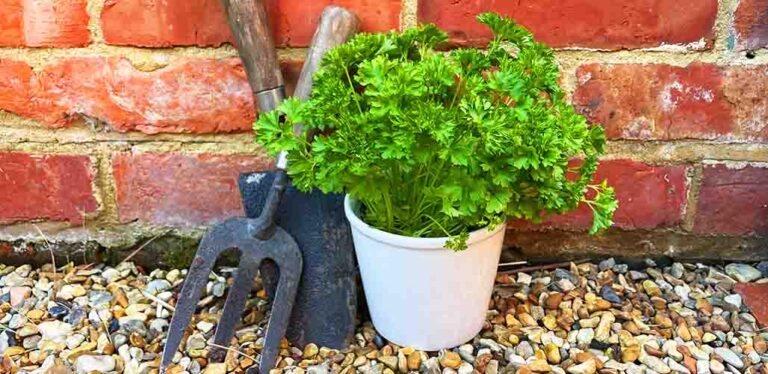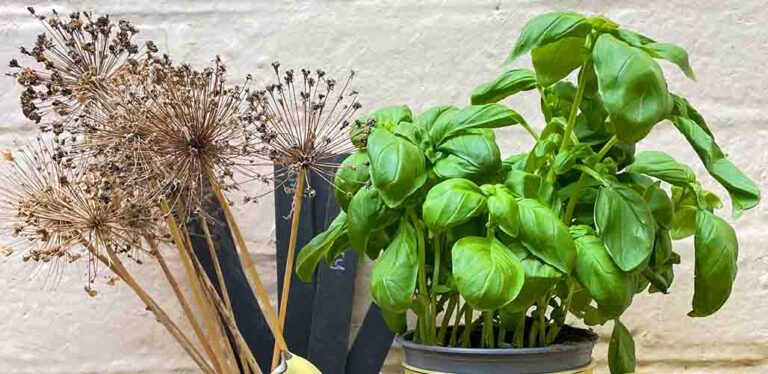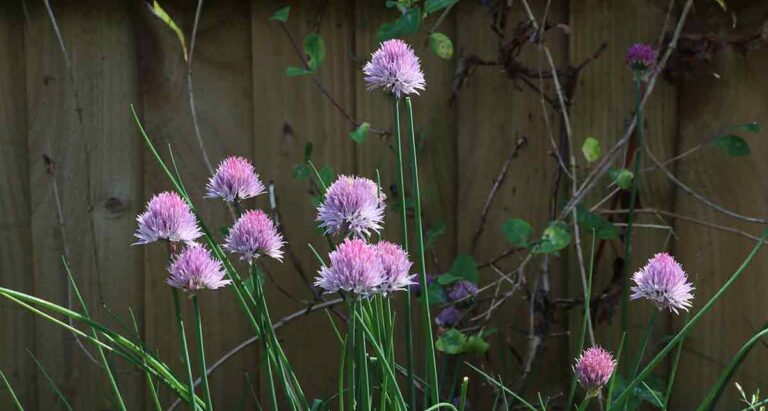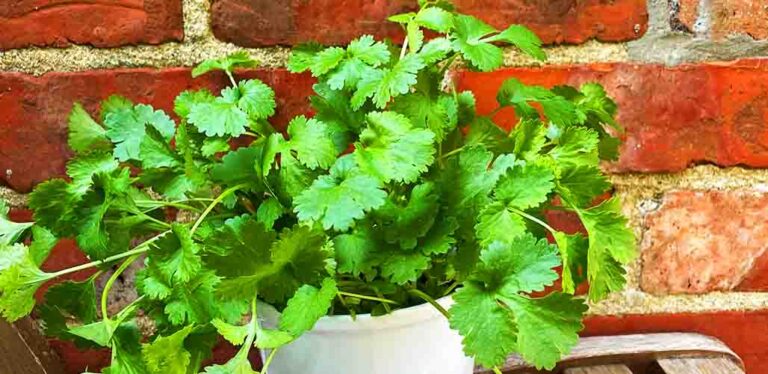Parsley Cold Tolerance: Will My Plants Cope With Winter Temperatures
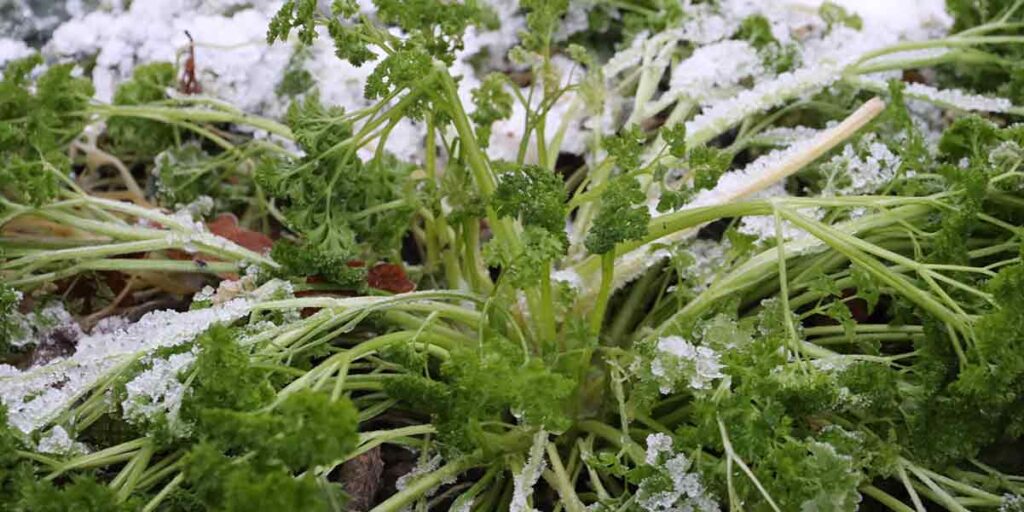
Parsley is one of my favorite herbs. We use it in our family risotto recipe, and many other dishes. My rabbits love it too and we grow a lot of it. We have some in our herb border, some in a big pot on the garden table just outside the back door, and some on the kitchen window sill.
Contents
- How cold is too cold?
- Is parsley meant to live all winter?
- Should I bring my plants indoors?
- Keeping a supply of winter parsley going
We are equivalent to a zone 9, just a few miles from the ocean. It’s usually quite mild where we live and parsley is fine outside during the winter. But this year we have had some very cold weather with frequent drops in temperature to well below freezing, for many days in a row.
All the outdoor water pipes on our homestead froze and I have been dragging a trolley full of watering cans around the fields to distribute fresh water to all our animals. I noticed on my early morning water foray today that our garden table parsley pot was looking very sad.
It was covered in thick frost and the stems had all collapsed down. I wasn’t sure whether to bring it indoors or not. So I did some research on parsley cold tolerance, and I thought I’d share that with you today.
How cold is too cold?
Parsley plants can cope with mild winters and even the occasional hard frost. You can find definition of different levels of frost in the Farmer’s Almanac
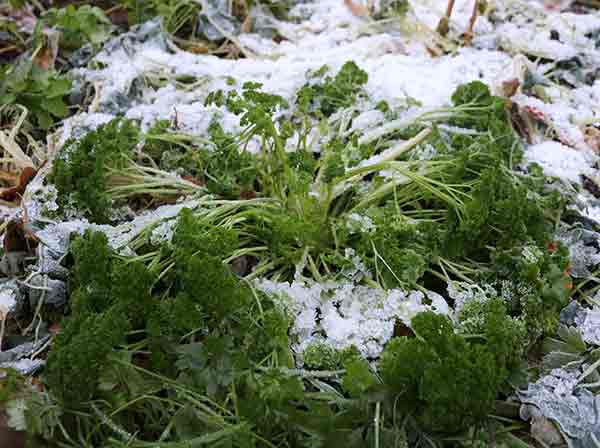
Several source agree that this herb can survive temperatures down to about 10 degrees fahrenheit. Whether or not what is left above ground would still be fit to eat after that is questionable! We could be talking about root survival here.
Is parsley meant to live all winter?
So is my plant meant to last through the winter? Or am I messing with nature. Should I just let my parsley plants die in the fall and manage with my indoor herbs until spring comes around?
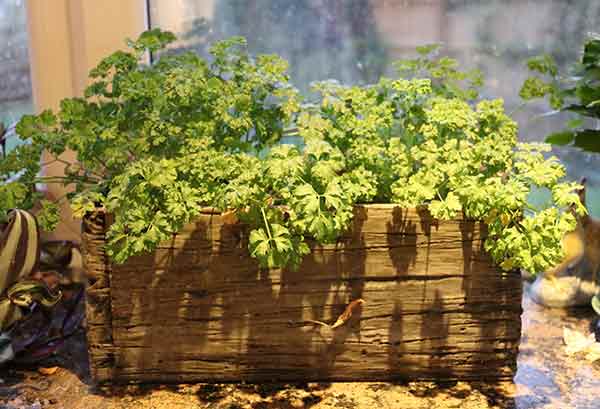
Well, although it is often grown as an annual, parsley is actually a biennial. That means in the right conditions it should grow happily outdoors for a couple of years.
Because we love the herb so much we do usually keep some going over the winter, but if the weather is too harsh in your area that might not work out for you. There are ways to extend the growing season though. Including mulching and using a coldframe (or cloche)
Thompson & Morgan know a thing or two about herbs, they’ve been selling seeds and plants for over a hundred years. Their technical manager David Batty suggests that you cover up a few plants with a cloche for a winter supply, or bring them indoors.
Should I bring my parsley indoors?
I do keep some of these plants inside. They are not awful, but they are not a huge success either. Parsley is one of those plants that never really looks a hundred percent indoors. If I put a sprig of my outdoor plants and my window sill parsley side by side, you’ll see what I mean.
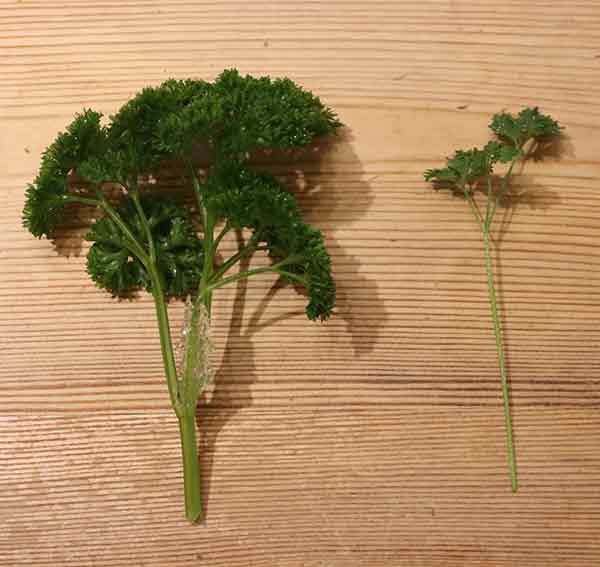
One looks fine and dandy, the other looks, well you decide. It’s not just having a bad day by the way, it always looks like that.
The problem might be that my kitchen is too warm. Once it has germinated, parsley is happiest in temperatures of 50-70F. Many of us like our heating at the upper end of that range, if not above it.
If you have a cool room, or you don’t turn your heating up as high as I do, then you might have more success than me!
Another reason might be that my kitchen window sill (east facing) just isn’t quite light enough. This is a herb that likes a good six hours of bright sunlight each day. In the winter, where I live, that isn’t going to happen every day, or even most days.
As an aside, I learned something new (to me) about parsley today. Did you know that it is closely related to the carrot (in fact you can use chopped carrot tops in place of parsley in some recipes) This information is important if you live in an area where carrot fly is a pest, because carrot flies can infest parsley plants too. And they are really difficult to get rid of. Worth bearing in mind when you are planning your planting rotation for your vegetable patch for next season.
Keeping a supply of winter parsley going
Keep picking your outdoor plants as you go into Fall. If the weather threatens to be very cold you can mulch mature plants or put some kind of shelter around them. A coldframe is ideal but four sticks with some bubble wrap around them might be enough.
You need to keep picking parsley or it becomes coarse and bitter. So I recommend you grow some in a border close to your kitchen or in a pot like I do near the back door. Because let’s face it, when the rain is lashing down or it’s cold and dark outside, you’re just not going to be bothered to pick leaves of a plant that isn’t easy to get at.
If your herb is in a pot, if the temperatures are dropping below freezing night after night, you might be better off bringing the pot inside.
Parsley is quite thirsty in a warm room, so remember to water regularly, and let the pot drain between each watering so the roots don’t get soggy
If you are planting fresh seeds indoors you need to put them in a warm place (70-80F) to germinate, or they’ll take forever. Be gentle when transplanting as parsley hates having its roots messed with.
Winter parsley thoughts
Fresh, home grown winter parsley is definitely doable. You may be able to overwinter the plants in the ground or in a pot. Our pot herb survived several nights of 28-29 degrees F last week. The frosts have gone for now and the plant is looking much happier already.
If outside is too harsh you can bring your outdoor plants in, or start a fresh batch going from seeds. Either way, life is too short to live without parsley!
Let us know if you manage to grow parsley on your window sill – hopefully it looks better than mine!


